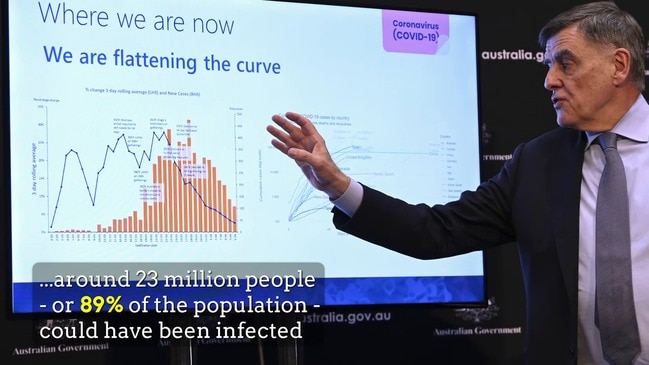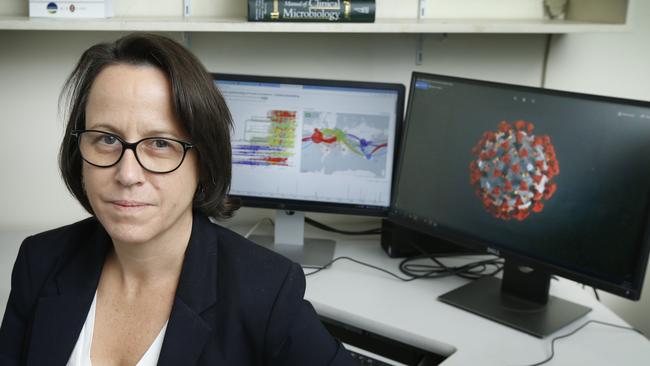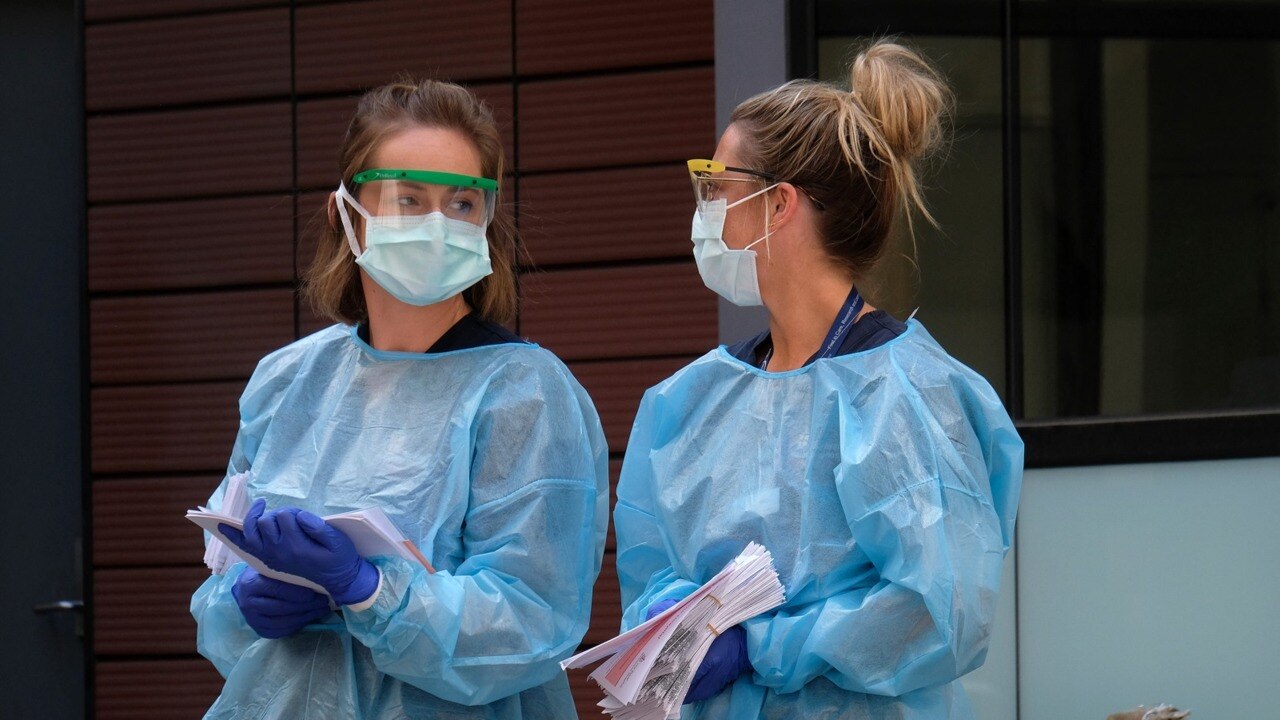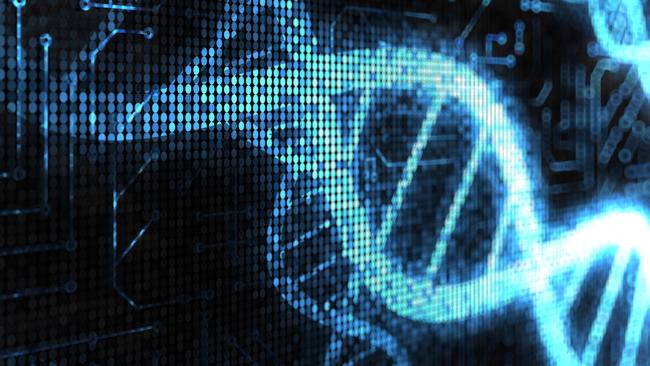How genes could be key to getting ahead of virus
Australian scientists have uncovered genetic mutations in coronavirus clusters, allowing contact tracers around the country to identify everyone likely to be linked to a cluster, even if they haven’t had symptoms.

Coronavirus
Don't miss out on the headlines from Coronavirus. Followed categories will be added to My News.
Germ detectives and scientists have uncovered genetic mutations in coronavirus clusters circulating throughout Australia, giving them a chance to move a step ahead of the disease.
The breakthrough by Doherty Institute scientists and Victorian Department of Health contact tracers is vital to limiting the spread of community transmission as the COVID-19.
By tracking the different mutations, detectives can pinpoint not only the country a person’s individual coronavirus infection originated from, but home in on the hospital, aged care centre, cruise or other local source they are linked to.
Associate Professor Deborah Williamson said contact tracers armed with the new genomic sequencing could identify everyone likely to be linked to a cluster, even if they were not symptomatic.
The genetic information also provides a clue where each cluster is likely to spread next, allowing more-targeted isolation to stop each COVID-19 outbreak, which is needed to ease restrictions on the broader population.

“We are seeing clusters related to different outbreaks in different parts of the world,” Assoc Prof Williamson said.
“The benefits are going to be in monitoring things like outbreaks in hospitals, outbreaks in aged care facilities, and looking at potential community transmission in Victoria and more broadly in Australia.
“If we did find there was an outbreak in a certain part of the community, then they could direct resources to that such as contact tracing, testing of those in that risk network.”
The Melbourne-based Doherty is at the forefront of global efforts to find a COVID-19 cure. While its genomic sequencing will not overcome the virus, combining the information with the epidemiological work of contact tracers could be a key to restoring freedoms.
The findings are also being shared with scientists around the world to further their own research, as well as increase the data available to Australian trace detectives.
After identifying subtle differences hidden among the 30,000 characters in the genetic code of two coronavirus clusters in Victoria, contact tracing detectives have already used the genomic sequencing technique to stop each spreading in recent weeks.
The Doherty’s scientists have pored over samples from hundreds of Victorian COVID-19 patients to genetically sequence each person’s infection, identifying telltale mutations in coronavirus imported from other countries.
But with Australia’s COVID-19 peak still possibly ahead, Assoc Prof Williamson said it was vital all states began collecting samples to build up a complete set of sequencing before community transmission
took off.
With a full set of sequencing data, any new cases could be traced to their origins to identify others unknowingly caught in the cluster or those who were at risk of being caught up.
“It’s no good sequencing a few genomes just from one hospital or from one outbreak. To get a proper handle on what’s going on we need to be sequencing all of the genomes not just in Victoria but in all of Australia,” Assoc Prof Williamson said.

While genome sequencing has been used in Victoria to trace the source and get ahead of well-established infectious diseases such as salmonella and tuberculosis for the past five years, identifying COVID-19 mutations has been much more difficult.
Because the novel coronavirus only emerged four months ago, its mutations have not had long to separate to a point where they are easily distinguishable.
But using powerful computers to overlay hundreds of samples from patients highlighted the smallest differences in the nucleotides of the RNA genome in patients already known to belong to certain clusters, helping to identify related cases.
Assoc Prof Williamson said work was continuing to identify more differences.
“It’s easy to forget that four-and-a-half months ago we didn’t even know this thing existed,” she said.
“We are trying to cram years of expertise and knowledge into a few short months.
“Every day we are learning something new about not just a virus, but ways to detect the virus, ways to control the outbreak.”

WHAT IS GENOMICS
Genomics is the study of whole genomes of organisms. It analyses the building blocks of cells such as DNA and RNA through sequencing to decode the fundamental structure and function of genomes. Genomic research has already been used to develop better understanding, tracking and defences against bacteria and viruses including meningococcal disease, salmonella, tuberculosis and cytomegalovirus, a member of the herpes family. Decoding can reveal mutations and allow scientists to act quickly to identify and isolate the source of the disease.
MORE NEWS
JUST ONE NEW COVID-19 INFECTION IN VICTORIA
